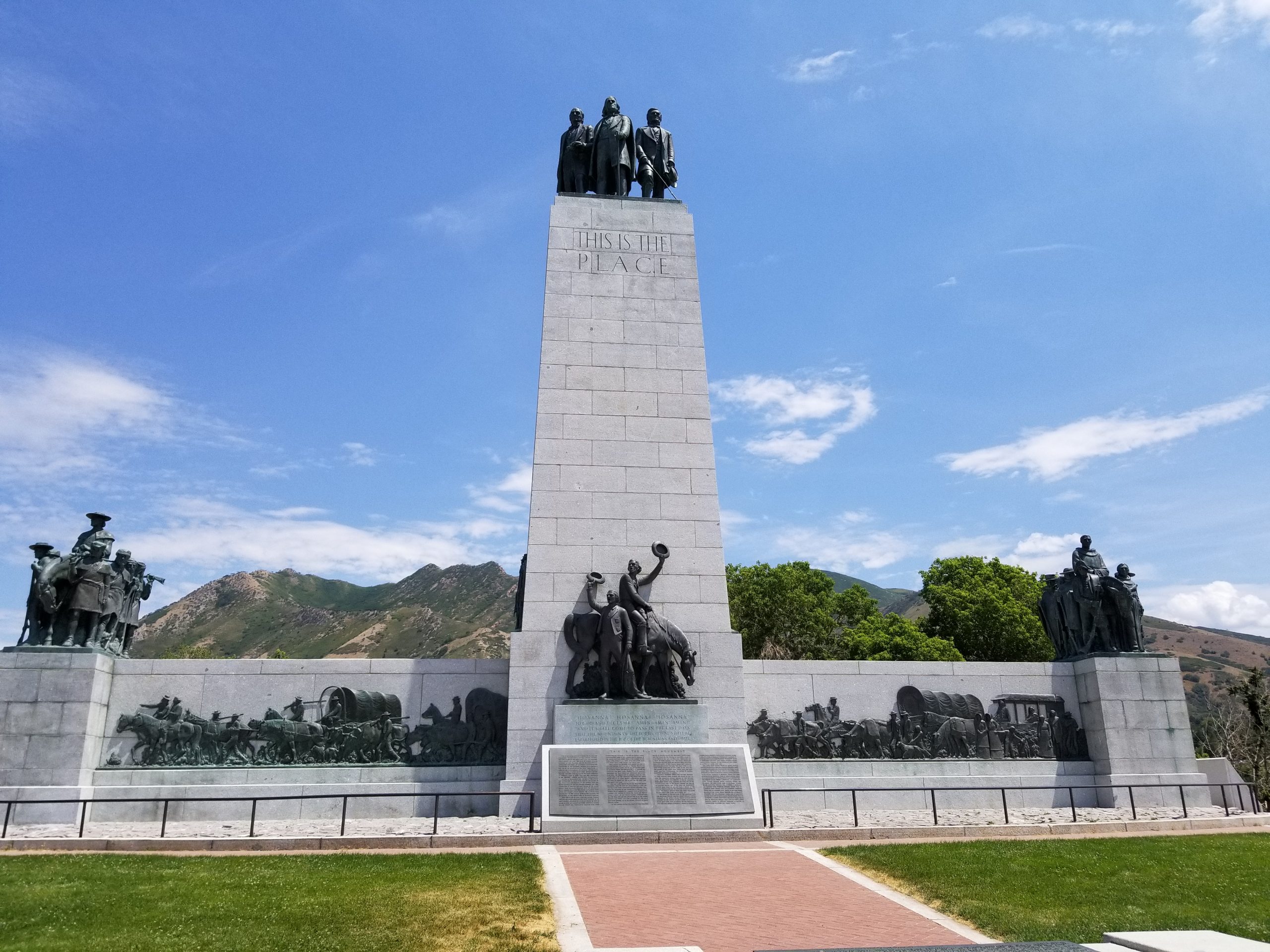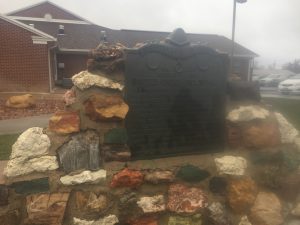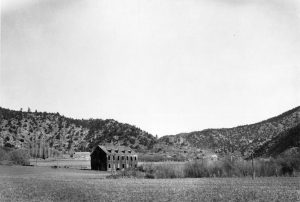Written by Lisa Barr, US History/ Public History MA Student, University of Utah
Jacob Hamblin (#21)
Placed by: Utah Pioneer Trails and Landmark Association and citizens of Kanab Stake
GPS Coordinates: 37° 02.967’ N, -112° 32.114’ W
Located at the Levi Stewart Memorial in Kanab
Historical Text:
No. 21 Erected Sept. 2, 1933
Jacob Hamblin
Born April 2, 1819 Died August 21, 1886
The great Mormon frontiersman and Indian missionary settled in Tooele Valley, Utah in 1850 and began preaching negotiations with the red men. He was so successful that the officials of the Church of Jesus Christ of Latter-day Saints sent him to establish residence among the Indians at Santa Clara, Utah in 1854.
A fort was erected on this site in 1865 into which he moved in 1869. He assisted Maj. J.W. Powell and party 1869-72. He was transferred in 1878 to Arizona and later to New Mexico. He is buried in Alpine, Arizona. His friendship with the Indians saved many lives.
Extended Research:
Jacob Hamblin was born in 1819 in Salem, Ohio and baptized into the Church of Jesus Christ of Latter-day Saints in 1842. He helped to settled Tooele, Utah in 1850 before Brigham Young sent him on a mission to the Native Americans in southern Utah in 1854. Hamblin first came to the Kanab area in 1867 to form alliances with members of the Hopi, Southern Paiute, and Navajo tribes. Hamblin hoped to teach them to farm, and convert them to Mormonism.
Eventually, Hamblin and his family moved from Santa Clara to Kanab in 1869 so that he could try to improve Mormon-Navajo relations in northern Arizona. In 1870, Brigham Young assigned Levi Stewart to lead Kanab’s resettlement which freed Hamblin to accompany John Wesley Powell on his second Colorado River expedition in 1871 and 1872. Hamblin and his family moved to Milligan’s Fort in Northern Arizona in 1878, and then to Pleasanton, New Mexico in 1883. He died of malaria in 1886 and is buried in Alpine, Arizona.
Fort Kanab (#151)
Placed by: The descendants of Levi Stewart and Pioneer Trails and Landmarks Association
GPS Coordinates: 37° 02.967’ N, -112° 32.114’ W
Historical Marker Text:
No. 115 Erected April 11, 1950
Fort Kanab
On June, 14, 1870 Levi Stewart, who had been called from Salt Lake County by President Brigham Young to head a group of pioneers in settling this area, brought a party with seven wagons from Pipe Spring, where they had camped temporarily to Fort Kanab which had been built a year before by Jacob Hamblin and Indian missionaries.
Kanab Ward was organized September 11, 1870 with Elder Stewart as bishop. Other settlers arrived, homes were built and plans were made for a permanent community. A fire in the fort on December 14, took the lives of Mrs. Margery Wilkerson Stewart and five sons.
Extended Research:
Kanab’s first settlers built Fort Kanab in stages between 1865 and 1869. The fort was vacated in 1866 due to increased Navajo and Southern Paiute raids that resulted from the Black Hawk War. In 1867, Jacob Hamblin traveled to the area to establish peace with Hopis and Southern Paiute Indians, however, Navajos continued to carryout raids throughout the region. Hamblin moved to Kanab from Santa Clara in 1869 and began to rebuild the fort which lasted until Brigham Young sent Levi Stewart to resettle the town of Kanab in 1870. The new settlers, including Stewart’s family, lived in the fort while they built homes in town. Southern Paiutes were also a part of Fort Kanab’s community and some lived in the fort and helped to farm the land in exchange for food.
Fort Kanab caught fire the night of December 14, 1870. Kerosene and turpentine that were stored in the fort exploded and collapsed the roof, killing Stewart’s wife Margery and five of their sons. Jacob Hamblin recalled the fire in his journal, stating that the fort was “in a moment enveloped in an intense flame which burst out from the only entrance, and that the scene could never be forgotten by those who witnessed it.”[1]
[1] Jacob Hamblin, Jacob Hamblin: His Life in His Own Words (New York: Paramount Books, 1995), 95.
For Further Reference:
Primary Sources:
Adams, John Q. Pioneer Personal History of John Q. Adams, Kanab, Utah. July, 16, 1938. https://collections.lib.utah.edu/details?id=700963&q=fort+kanab&page
Beckwith, Frank Asahel. Kanab Markers (2). February 1, 1941, Willard Marriott Library, Salt Lake City, Utah. https://collections.lib.utah.edu/details?id=12525 https://collections.lib.utah.edu/details?id=442803&q=jacob+hamblin&page
https://collections.lib.utah.edu/details?id=442804&q=jacob+hamblin&page
Hamblin, Jacob. Jacob Hamblin: Life in His Own Words. New York: Paramount Books, 1995.
Secondary Sources:
Bradley, Martha Sonntag. A History of Kane County. Salt Lake City: Utah State Historical Society, Kane County Commission, 1999.
Brooks, Juanita. Jacob Hamblin: Mormon Apostle to the Indians. Salt Lake City: Westwater Press, 1980.
Compton, Todd. A Frontier Life: Jacob Hamblin, Explorer and Indian Missionary. Salt Lake City: University of Utah Press, 2013.









